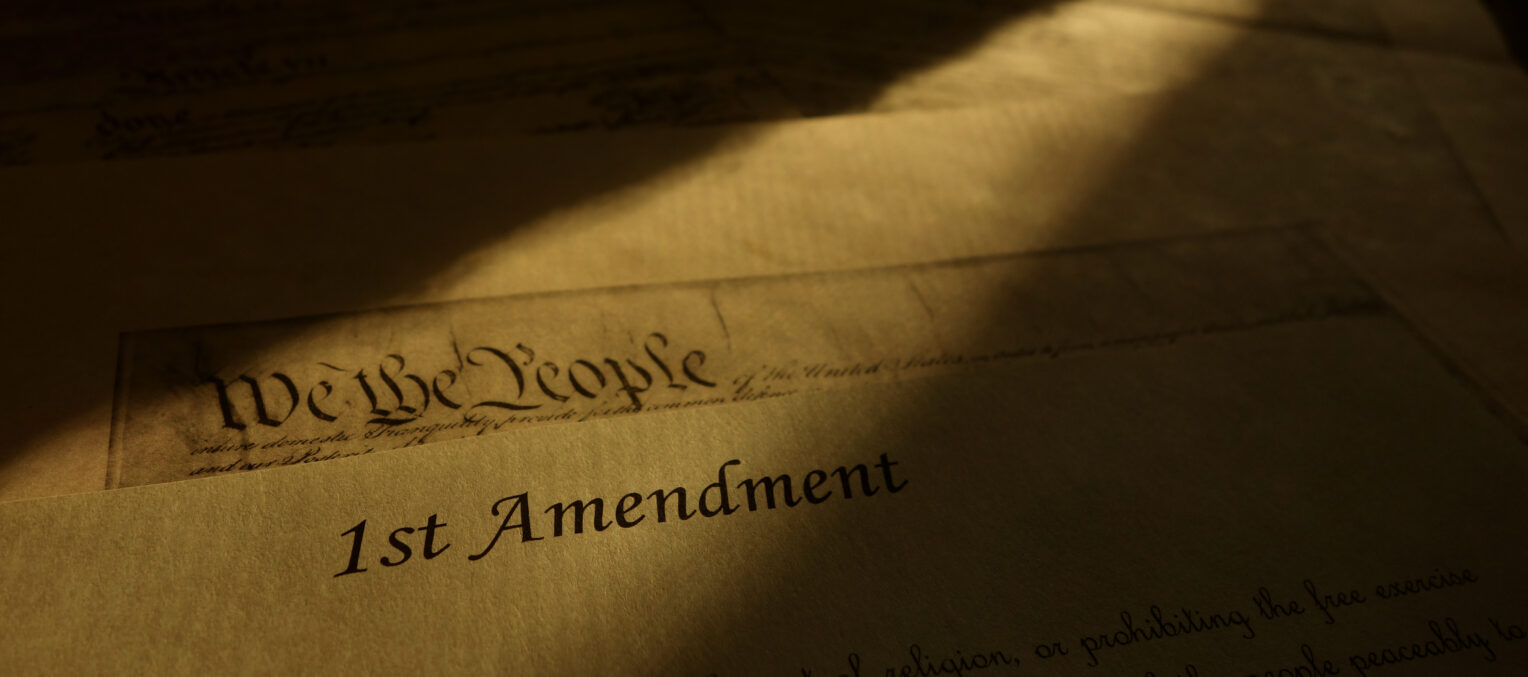
In his recent concurrence in Biden v. Knight, Justice Clarence Thomas sketched a roadmap for how to regulate social-media platforms. The animating factor for Thomas, much like for other conservatives, appears to be a sense that Big Tech has exhibited anti-conservative bias in its moderation decisions, most prominently by excluding former President Donald Trump from Twitter and Facebook. The opinion has predictably been greeted warmly by conservative champions of social-media regulation, who believe it shows how states and the federal government can proceed on this front.
While much of the commentary to date has been on whether Thomas got the legal analysis right, or on the uncomfortable fit of common-carriage law to social media, the deeper question of the First Amendment’s protection of private ordering has received relatively short shrift.
Conservatives’ main argument has been that Big Tech needs to be reined in because it is restricting the speech of private individuals. While conservatives traditionally have defended the state-action doctrine and the right to editorial discretion, they now readily find exceptions to both in order to justify regulating social-media companies. But those two First Amendment doctrines have long enshrined an important general principle: private actors can set the rules for speech on their own property. I intend to analyze this principle from a law & economics perspective and show how it benefits society.
Who Balances the Benefits and Costs of Speech?
Like virtually any other human activity, there are benefits and costs to speech and it is ultimately subjective individual preference that determines the value that speech has. The First Amendment protects speech from governmental regulation, with only limited exceptions, but that does not mean all speech is acceptable or must be tolerated. Under the state-action doctrine, the First Amendment only prevents the government from restricting speech.
Some purported defenders of the principle of free speech no longer appear to see a distinction between restraints on speech imposed by the government and those imposed by private actors. But this is surely mistaken, as no one truly believes all speech protected by the First Amendment should be without consequence. In truth, most regulation of speech has always come by informal means—social mores enforced by dirty looks or responsive speech from others.
Moreover, property rights have long played a crucial role in determining speech rules within any given space. If a man were to come into my house and start calling my wife racial epithets, I would not only ask that person to leave but would exercise my right as a property owner to eject the trespasser—if necessary, calling the police to assist me. I similarly could not expect to go to a restaurant and yell at the top of my lungs about political issues and expect them—even as “common carriers” or places of public accommodation—to allow me to continue.
As Thomas Sowell wrote in Knowledge and Decisions:
The fact that different costs and benefits must be balanced does not in itself imply who must balance them?or even that there must be a single balance for all, or a unitary viewpoint (one “we”) from which the issue is categorically resolved.
Knowledge and Decisions, p. 240
When it comes to speech, the balance that must be struck is between one individual’s desire for an audience and that prospective audience’s willingness to play the role. Asking government to use regulation to make categorical decisions for all of society is substituting centralized evaluation of the costs and benefits of access to communications for the individual decisions of many actors. Rather than incremental decisions regarding how and under what terms individuals may relate to one another—which can evolve over time in response to changes in what individuals find acceptable—government by its nature can only hand down categorical guidelines: “you must allow x, y, and z speech.”
This is particularly relevant in the sphere of social media. Social-media companies are multi-sided platforms. They are profit-seeking, to be sure, but the way they generate profits is by acting as intermediaries between users and advertisers. If they fail to serve their users well, those users could abandon the platform. Without users, advertisers would have no interest in buying ads. And without advertisers, there is no profit to be made. Social-media companies thus need to maximize the value of their platform by setting rules that keep users engaged.
In the cases of Facebook, Twitter, and YouTube, the platforms have set content-moderation standards that restrict many kinds of speech that are generally viewed negatively by users, even if the First Amendment would foreclose the government from regulating those same types of content. This is a good thing. Social-media companies balance the speech interests of different kinds of users to maximize the value of the platform and, in turn, to maximize benefits to all.
Herein lies the fundamental difference between private action and state action: one is voluntary, and the other based on coercion. If Facebook or Twitter suspends a user for violating community rules, it represents termination of a previously voluntary association. If the government kicks someone out of a public forum for expressing legal speech, that is coercion. The state-action doctrine recognizes this fundamental difference and creates a bright-line rule that courts may police when it comes to speech claims. As Sowell put it:
The courts’ role as watchdogs patrolling the boundaries of governmental power is essential in order that others may be secure and free on the other side of those boundaries. But what makes watchdogs valuable is precisely their ability to distinguish those people who are to be kept at bay and those who are to be left alone. A watchdog who could not make that distinction would not be a watchdog at all, but simply a general menace.
Knowledge and Decisions, p. 244
Markets Produce the Best Moderation Policies
The First Amendment also protects the right of editorial discretion, which means publishers, platforms, and other speakers are free from carrying or transmitting government-compelled speech. Even a newspaper with near-monopoly power cannot be compelled by a right-of-reply statute to carry responses by political candidates to editorials it has published. In other words, not only is private regulation of speech not state action, but in many cases, private regulation is protected by the First Amendment.
There is no reason to think that social-media companies today are in a different position than was the newspaper in Miami Herald v. Tornillo. These companies must determine what, how, and where content is presented within their platform. While this right of editorial discretion protects the moderation decisions of social-media companies, its benefits accrue to society at-large.
Social-media companies’ abilities to differentiate themselves based on functionality and moderation policies are important aspects of competition among them. How each platform is used may differ depending on those factors. In fact, many consumers use multiple social-media platforms throughout the day for different purposes. Market competition, not government power, has enabled internet users (including conservatives!) to have more avenues than ever to get their message out.
Many conservatives remain unpersuaded by the power of markets in this case. They see multiple platforms all engaging in very similar content-moderation policies when it comes to certain touchpoint issues, and thus allege widespread anti-conservative bias and collusion. Neither of those claims have much factual support, but more importantly, the similarity of content-moderation standards may simply be common responses to similar demand structures—not some nefarious and conspiratorial plot.
In other words, if social-media users demand less of the kinds of content commonly considered to be hate speech, or less misinformation on certain important issues, platforms will do their best to weed those things out. Platforms won’t always get these determinations right, but it is by no means clear that forcing them to carry all “legal” speech—which would include not just misinformation and hate speech, but pornographic material, as well—would better serve social-media users. There are always alternative means to debate contestable issues of the day, even if it may be more costly to access them.
Indeed, that content-moderation policies make it more difficult to communicate some messages is precisely the point of having them. There is a subset of protected speech to which many users do not wish to be subject. Moreover, there is no inherent right to have an audience on a social-media platform.
Conclusion
Much of the First Amendment’s economic value lies in how it defines roles in the market for speech. As a general matter, it is not the government’s place to determine what speech should be allowed in private spaces. Instead, the private ordering of speech emerges through the application of social mores and property rights. This benefits society, as it allows individuals to create voluntary relationships built on marginal decisions about what speech is acceptable when and where, rather than centralized decisions made by a governing few and that are difficult to change over time.




